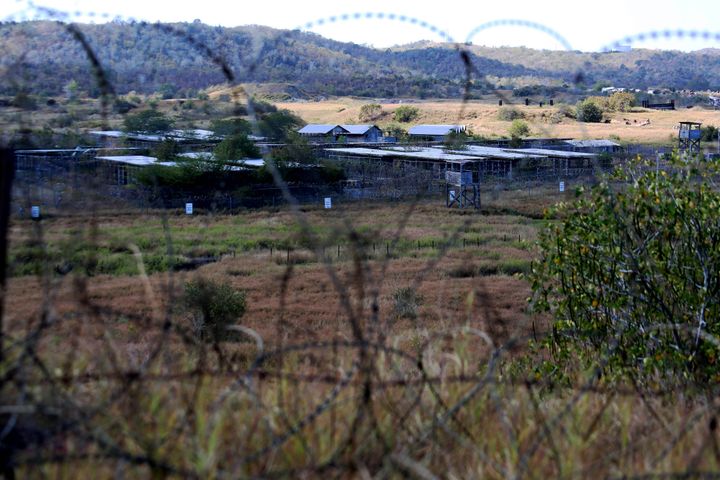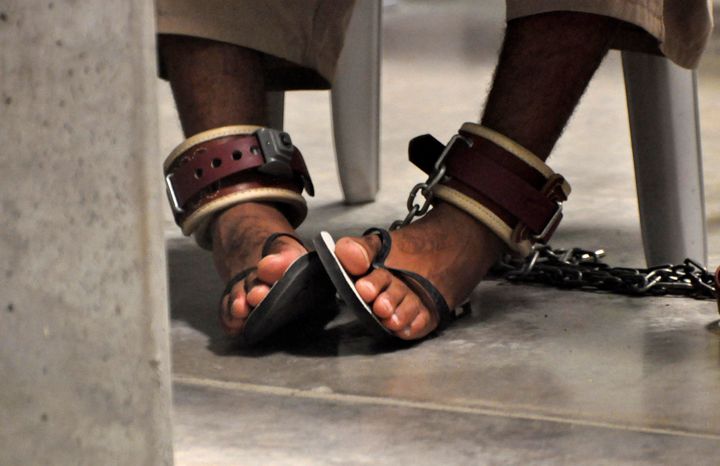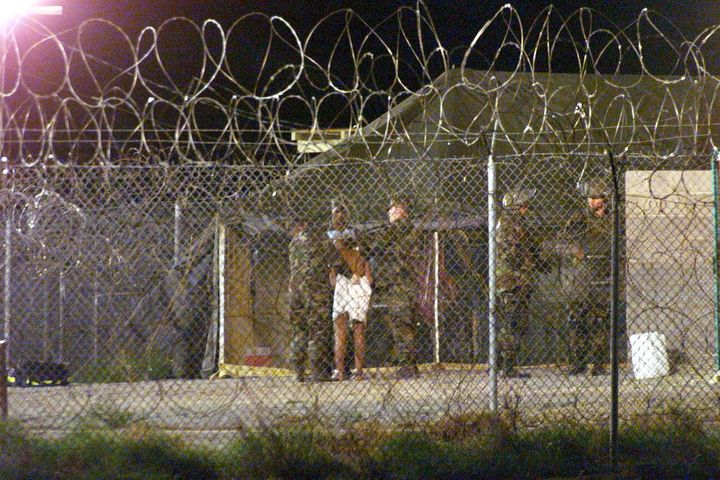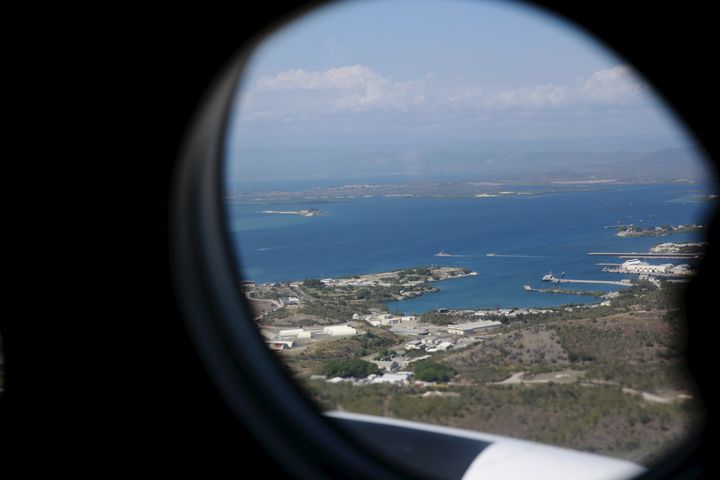Donald Trump has abandoned his idea to send the man suspected of killing eight people in Tuesday’s terror attack in New York to Guantanamo Bay after he was described as “idiotic” by a leading civil rights group.
In tweets posted on Thursday, the President backtracked on earlier remarks made to reporters in which he said he would “certainly consider” sending Sayfullo Saipov to the infamous detention centre on the island of Cuba.
But Trump’s apparent support for Guantanamo Bay and his calls for the death penalty have prompted some human rights experts to question just how much he actually knows about the legacy of the War on Terror and the wider legal system.
Bella Sankey, Reprieve’s Deputy Director, told HuffPost UK: “In moments like this our elected officials are under pressure to respond but the responses we’ve seen have been knee-jerk and wrong-headed and demonstrate that President Trump in particular knows very little about the American justice system.”

Here are 5 things Trump should acquaint himself with before tweeting next time...
1) Guantanamo Bay Doesn’t Work
Guantanamo Bay was established in 2002 in the wake of the 9/11 attacks and has housed 780 “enemy combatants” captured almost exclusively during the invasions of Iraq and Afghanistan.
Sixteen years later and 41 still remain - the rest have all been released without charge despite detainments without trial lasting longer than a decade.
Only seven of the remaining 41 detainees have been charged with a crime.
In comparison, US federal courts have prosecuted 578 terrorism cases “inspired by jihadist ideas” since 9/11.
Sankey said: “This is an event that happened on US soil, the federal law exists to prosecute serious crime including terrorism and is more then well equipped to deal with cases of this kind.
“So the idea that we would refer back to the kind of incredibly unhelpful rhetoric of ‘enemy combatants’, talk of threats of sending people to GB, that is not how you effectively deal with terrorism and the last 16 years have really shown us it makes much more sense from a security and justice perspective to deal with this within the rule of law and criminal due process.”

2) It’s Been A Rallying Call For Terrorist Groups
Guantanamo Bay has been used as a recruitment tool in terrorist propaganda, portraying it as evidence that Muslims are unjustly treated by the West and America in particular.
George Bush himself wrote in his memoirs: ”[T]he detention facility had become a propaganda tool for our enemies and a distraction for our allies.”
Although its prominence in jihadist literature has declined in recent years, the striking orange jumpsuits worn by those executed by Islamic State are a direct reference to the ones worn by Guantanamo Bay inmates.
So whilst it may not be the “home” of terrorism, it has certainly played its part in the propaganda war that helps inspire it.
Amnesty International’s USA Security with Human Rights Director, Daphne Eviatar, said in a statement: “Guantánamo has become an international symbol of torture, rendition and indefinite detention without charge or trial - it must be closed, not expanded.”

3) There’s A Reason Previous Administrations Have Tried To Close It, Not Expand It
Bush saw it for what it had become and so did President Obama who tried, but failed, to close it down completely before his second term ended.
In 2016 he said: “For many years, it’s been clear that the detention facility at Guantanamo Bay does not advance our national security - it undermines it.
″... keeping this facility open is contrary to our values. It undermines our standing in the world.
“It is viewed as a stain on our broader record of upholding the highest standards of rule of law.”

4) The Term ‘Enemy Combatant’ Has Been Hugely Problematic
Senator Lindsey Graham on Wednesday called on Trump to declare Saipov an “unlawful enemy combatant”.
During the War on Terror, detainees were classed as such as opposed to “lawful enemy combatants” or “prisoners of war” (POW).
Both refer to a person captured on the battlefield, the justification put forward by some for Saipov’s case being that the US is engaged in a war against Islamic State and its ideology.
But each classification carries subtle differences in how they can be treated once captured.
Lawful Enemy Combatant
A lawful enemy combatant is a “member of the regular forces of a State party or militia, volunteer corps, or organised resistance movement belonging to a State party engaged in hostilities against the United States”.
Once captured a lawful enemy combatant becomes a POW subject to international law as detailed in The Geneva Conventions.
As such a POW can only be held as long as the conflict continues and entitles them to a certain number of rights which ensure their detention is carried out in a way that affords them “honour and respect”
Unlawful Enemy Combatant
During the War on Terror, the Bush administration decided that al-Qaeda and the Taliban, who ruled Afghanistan, did not count as any of the enemy forces described by the lawful enemy combatant definition.
It therefore concluded detainees would be classed as unlawful/illegal enemy combatants, a finding codified in a military order issued by President Bush in November 2001.
This allowed the administration - against the advice of the State Department - to declare that detainees would not be subject to the Geneva Conventions.
It was this decision that would ultimately lead to the political and military environment that allowed the Abu Ghraib scandal, waterboarding and torture, and the “cruel and inhuman” conditions at Guantanamo Bay.

5) A President Really Shouldn’t Tweet Things Like This
Presidents are generally advised not to publicly weigh in on pending criminal cases given their huge influence in forming the opinions of potential jurors or giving the impression of exerting pressure on the judiciary to find in favour of a certain result.
Neil Durkin, spokesperson for Amnesty International UK, told HuffPost UK: “As far as Trump’s call for the death penalty for Sayfullo Saipov goes - needless to say we find this very concerning, as it violates the presumption of innocence as well as attempts to present the death penalty as a legitimate response.”
Some people have compared Trump’s reaction to the New York terror attack to his response to last month’s mass shooting in Las Vegas.
Sankey said: “In some senses it’s worrying because when someone is in a position of such importance and has such incredibly high office of state, there are expectations around that that this person is going to show leadership and judgement.
“So obviously it’s deeply concerning that his response to this case has been so wild and so improper and there is talk now that his response may actually end up prejudicing the trial that now needs to go ahead.
“At the same time this President is not someone who has covered themselves in glory on many related issues and so I don’t think his response is particularly surprising and one would hope that increasingly people are learning to take his wild and frantic Twitter outbursts with a pinch of salt.
“The President is not particularly known for his consistency or wisdom on any of these policy issues.”

